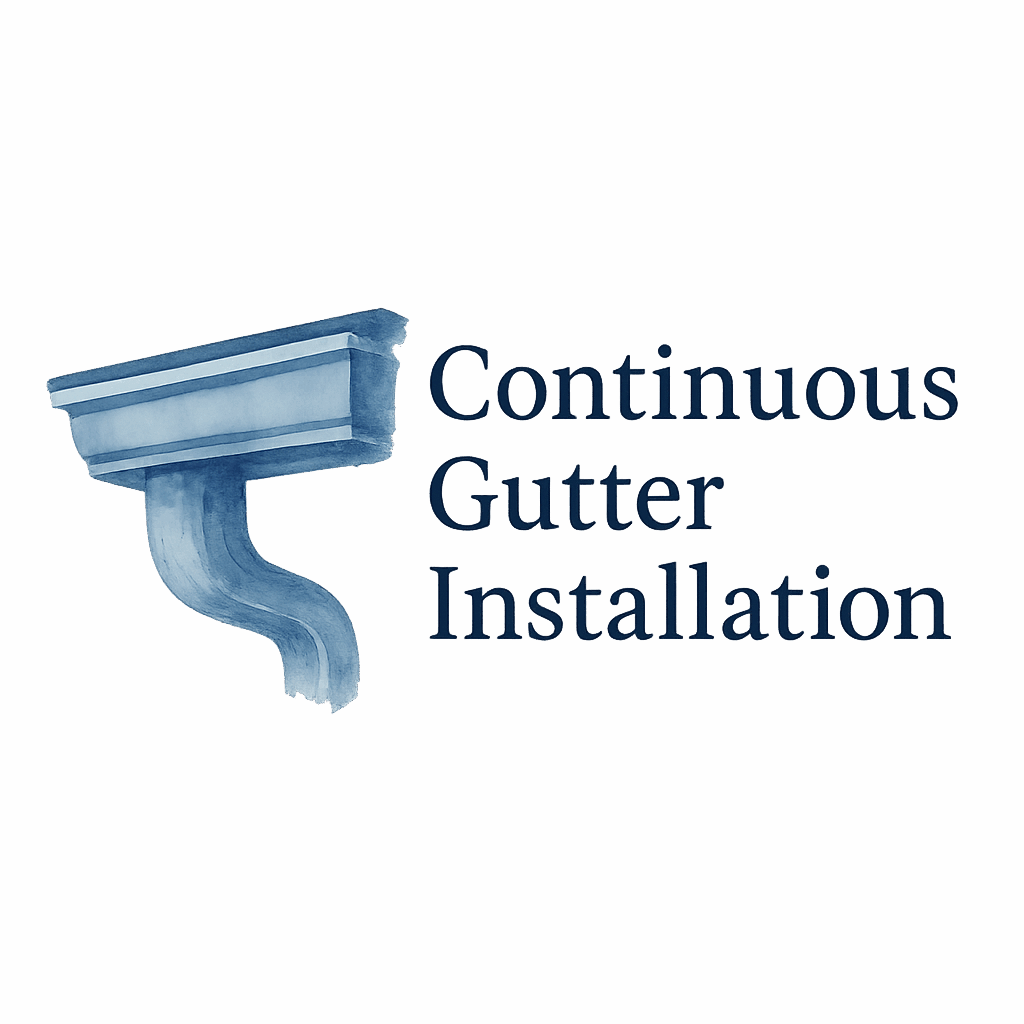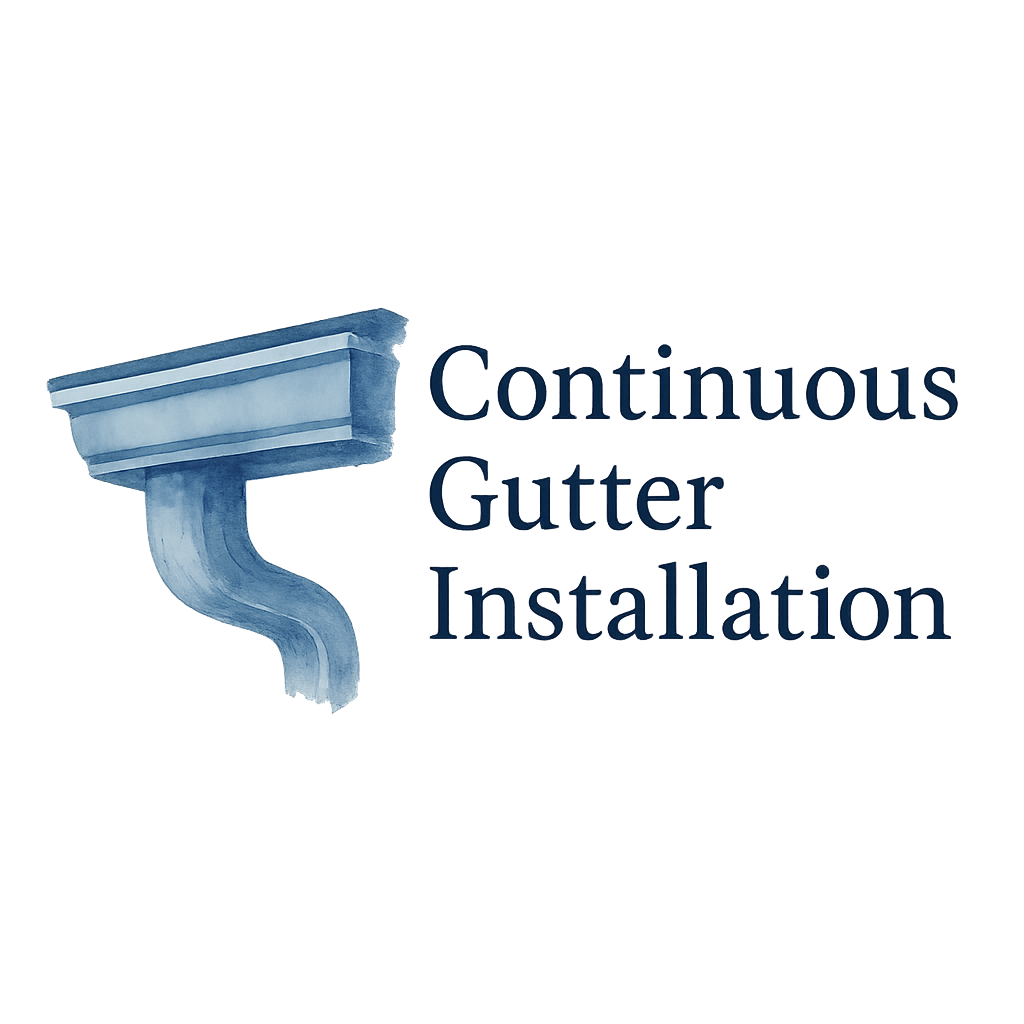Introduction to Continuous Gutter Installation
Your home is more than just four walls—it’s your biggest investment and a safe space for your family. But here’s the thing: many homeowners underestimate how big of a role gutters play in keeping that investment safe. Without proper gutters, rainwater can wreak havoc on your foundation, walls, and landscaping. That’s why continuous gutter installation is becoming the go-to solution for modern homeowners who want lasting protection without the headache of constant repairs.
In this post, we’ll walk through the 5 clear signs your home needs continuous gutter installation, why seamless gutters outperform traditional ones, and how to protect your home from costly water damage.
What Are Continuous Gutters?
Continuous gutters, also called seamless gutters, are made from a single piece of material that runs the entire length of your roofline. Unlike sectional gutters that are pieced together, seamless gutters have fewer joints—meaning fewer chances for leaks, sagging, and clogs.
Continuous Gutters vs. Sectional Gutters
Think of sectional gutters like puzzle pieces. Each connection is a weak spot that eventually leaks. Continuous gutters, on the other hand, are like a single sturdy shield. They’re cut to fit your home perfectly, giving you a sleek, durable system that requires less maintenance.
Why Homeowners Prefer Seamless Gutters
- They’re leak-resistant.
- They look modern and streamlined.
- They reduce long-term maintenance costs.
- They boost curb appeal and property value.
You can learn more about the basics of gutter installation here.
Sign #1: Frequent Water Damage Around Your Home
If you’re noticing water stains, flooding, or foundation issues, that’s your first warning.
Water Pooling Near the Foundation
Standing water around your home after rain isn’t normal. It means your current gutters aren’t doing their job. Left unchecked, pooled water can crack your foundation and cause costly structural problems.
Damage to Landscaping and Soil Erosion
Your flower beds and lawn shouldn’t look like a miniature riverbed after every storm. Continuous gutters prevent runoff that washes away soil and damages plants.
For more budgeting advice, check out gutter cost planning.
Sign #2: Visible Gutter Damage or Sagging
Old, sagging gutters are not just ugly—they’re dangerous.
Cracks, Rust, and Leaks in Old Gutters
If your gutters look like they’ve been through a battle—rust spots, cracks, or visible holes—it’s time to replace them. Temporary sealants won’t fix long-term damage.
Sagging Gutters That Pull Away from the Roofline
When gutters pull away from your house, water spills down your siding instead of draining safely. This not only damages siding but also risks interior leaks.
See tips on gutter replacement.
Sign #3: Basement Leaks and Interior Moisture
Water has a sneaky way of finding its way inside.
Mold and Mildew Growth in the Basement
A damp basement with moldy smells isn’t just uncomfortable—it’s a health hazard. Poor gutter systems are often the hidden culprit behind basement moisture.
Peeling Paint and Damp Walls
If your paint is bubbling or your walls are damp, it’s time to look up at your gutters. Overflowing or broken gutters allow rainwater to soak into your exterior walls.
Check out gutter damage prevention for more info.

Sign #4: Overflowing Gutters During Rainstorms
If you hear waterfalls pouring off your roof during storms, your gutters are screaming for help.
Clogged Gutters That Fail to Channel Water
Leaves, twigs, and debris clog sectional gutters easily. Continuous gutters paired with gutter protection systems reduce clogs dramatically.
Impact of Overflow on Roof and Fascia Boards
Overflowing gutters don’t just cause puddles—they rot your roof edges and fascia boards, leading to expensive repairs.
Read more on gutter cleaning tips.
Sign #5: Increased Maintenance and Constant Repairs
At some point, patch jobs become more expensive than a full replacement.
When Cleaning Feels Never-Ending
If you’re on a ladder every weekend scooping leaves, it’s time to invest in continuous gutters with gutter screens for better debris control.
Spending Too Much on Temporary Fixes
Constantly calling a repair guy? That money adds up quickly. Seamless gutters are a long-term investment that pays off by reducing repairs.
Benefits of Continuous Gutter Installation
Switching to seamless gutters isn’t just about fixing problems—it’s about upgrading your home’s defense system.
Long-Term Durability and Fewer Leaks
Seamless design = fewer weak points. That means fewer leaks and longer-lasting performance.
Improved Home Aesthetics and Value
They give your home a clean, modern look that boosts curb appeal instantly.
Protection Against Costly Water Damage
Think of continuous gutters as your home’s raincoat. Without them, water seeps into every crack, costing you thousands in repairs.
See options for trendy gutter styles.
Choosing the Right Continuous Gutters for Your Home
Not all gutters are created equal—your choice depends on style, budget, and protection needs.
Exploring Different Gutter Types and Styles
From half-round to K-style, continuous gutters come in a variety of looks. Explore gutter types and styles before deciding.
Affordable and Cost-Effective Gutter Options
Don’t think seamless gutters are out of reach. Many affordable gutter and budget gutters options exist that balance quality and price.
Gutter Protection Systems for Debris Control
Adding guards or screens reduces maintenance and keeps your system running efficiently. Learn about debris control.
Installation Basics and Budget Considerations
Planning for gutters means knowing what to expect.
Understanding the Cost of Gutter Installation
Pricing depends on your home size, material, and add-ons. Use gutter cost budgeting to avoid surprises.
Finding Affordable and Budget-Friendly Solutions
Cheap isn’t always better. Look for cost-effective solutions that balance affordability with durability.
Maintenance Tips for Continuous Gutters
A little care goes a long way.
Seasonal Care and Cleaning Recommendations
Regular seasonal maintenance prevents buildup. Check out seasonal care tips to keep gutters flowing year-round.
Recognizing Early Gutter Warning Signs
Catch problems early before they grow. Look for sagging, leaks, or water stains—see gutter warning signs.
Common Mistakes to Avoid with Gutters
Even with the best gutters, mistakes can undermine your investment.
Ignoring Gutter Damage Too Long
Delaying repairs only leads to bigger bills later.
Choosing Cheap Gutter Options Over Quality
“Cheap gutters” may save money now but cost more in long-term repairs. See why cheap gutter isn’t always the best choice.
Conclusion
Your gutters are your home’s unsung heroes, quietly protecting your foundation, walls, and landscaping from destructive water damage. If you’ve spotted any of the five signs—water pooling, sagging, basement leaks, overflowing, or endless repairs—it’s time to consider continuous gutter installation.
By upgrading to seamless gutters, you’re not just preventing damage—you’re investing in your home’s longevity, safety, and beauty. And with affordable, durable, and stylish options available today, there’s no reason to wait until disaster strikes.
FAQs
1. What makes continuous gutters better than sectional gutters?
They have fewer joints, which means fewer leaks and less maintenance.
2. How long do continuous gutters typically last?
With proper care, they can last 20+ years, depending on the material.
3. Do continuous gutters require gutter screens or guards?
Not always, but adding them reduces clogs and cleaning.
4. Are seamless gutters expensive to install?
They cost more upfront than sectional, but they save money in long-term repairs.
5. Can I install continuous gutters myself?
It’s possible but not recommended—professional installation ensures a perfect fit.
6. How do I know when to replace my gutters?
Look for leaks, sagging, rust, and constant clogs—these are red flags.
7. What’s the best season to install new gutters?
Spring and fall are ideal, but you can install year-round depending on weather.


